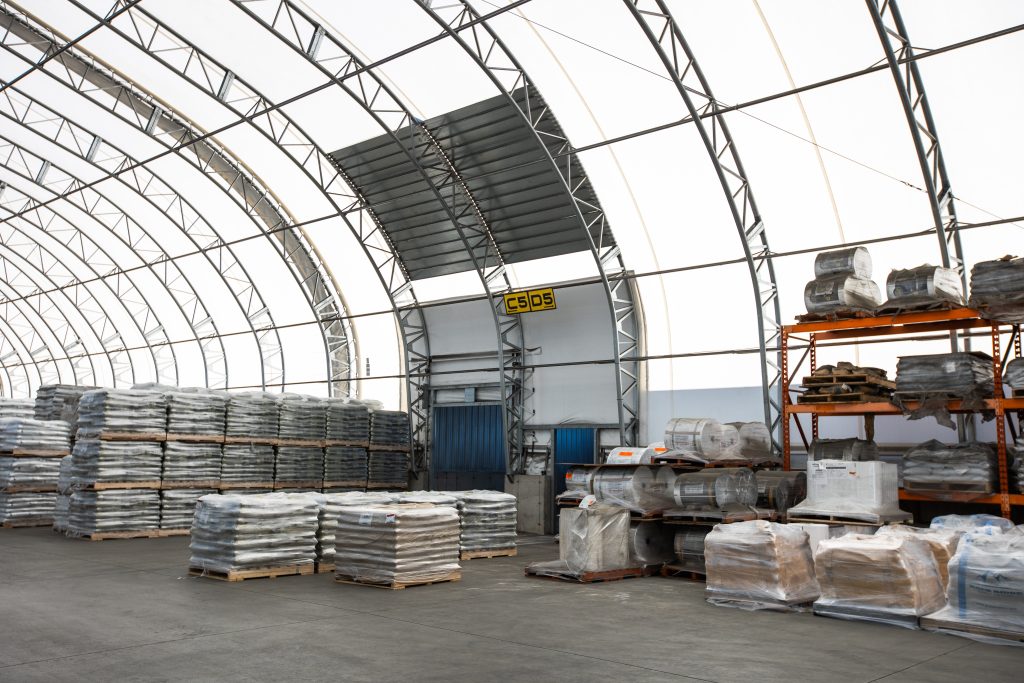What You Need to Know
Our Fabric covered structures in Ontario already comply with the 2020 Building Code, ensuring adherence to the latest safety and quality standards. This guarantees that our MegaDome fabric structures are not only robust and durable but also safe and aligned with modern requirements.
As Ontario gears up for the implementation of its new building code on January 1, 2025, stakeholders across the construction industry are preparing for significant changes that will align the provincial code more closely with the 2020 National Construction Codes. This transition is designed to streamline processes, enhance safety, and promote energy efficiency, but it also means adjustments for builders, architects, and developers. Here’s what you need to know about these changes and their impact, particularly on fabric buildings.



Key Changes in Ontario Building Code 2020 Fabric Buildings
1. Structural Design and Safety: The new building code will introduce updated requirements for structural integrity, particularly focusing on earthquake resistance and overall building safety. For fabric buildings, this could mean incorporating more robust design elements and construction practices to meet these enhanced standards (OAA) (Efficiency Canada).
2. Fire Safety: Enhanced fire safety measures will be a critical component of the new code. This includes advanced fire protection systems and the use of fire-resistant materials. Fabric buildings will need to comply with these stringent fire safety standards, which could involve significant changes to current designs (Efficiency Canada) (OAA).
3. Energy Efficiency: One of the primary goals of the new building code is to improve energy efficiency. This will likely involve better insulation standards, energy-efficient HVAC systems, and other measures aimed at reducing energy consumption. Fabric building manufacturers will need to adopt these practices to ensure compliance (Efficiency Canada).
4. Accessibility: The updated code will also include new accessibility requirements, particularly for larger buildings. Fabric buildings used for commercial or public purposes will need to ensure they meet these new standards, which may involve modifications to entrances, exits, and interior layouts (OAA).
5. Environmental Considerations: New provisions for environmental health and safety, such as radon mitigation and carbon monoxide alarms, will be part of the code. Fabric buildings will need to integrate these features to comply with health and safety regulations (OAA).
Ontario Building Code 2020 fabric buildings Impact
The implementation of the new building code will have several impacts on fabric buildings:
- Design Adjustments: To meet the new structural and fire safety standards, fabric building designs may need to be altered, potentially affecting the materials and methods used in construction.
- Cost Implications: Upgrading to meet new energy efficiency and safety standards could lead to increased construction costs. However, these investments will likely result in long-term savings through improved energy efficiency and reduced maintenance.
- Regulatory Compliance: Builders and manufacturers will need to ensure that their projects comply with the new code from January 1, 2025. This means updating documentation, training staff, and possibly re-engineering certain aspects of building designs (Environmental Registry of Ontario) (OAA).
For projects that demand complete design documentation and code certification, engineered building compliance ensures every component is verified by licensed professionals. These structures meet or exceed Ontario Building Code requirements for safety, load capacity, and durability.
Comparing the 2020 and 2015 Ontario Building Codes: Minimum Load Requirements
The 2020 Ontario Building Code introduces updated minimum requirements for snow, wind, and rain loads to enhance building safety and performance. Compared to the 2015 Ontario Building Code, there are several key updates:
Snow Load
- 2024: The minimum specified snow load is 1 kPa, calculated using a comprehensive formula that includes factors for importance, ground snow load, roof characteristics, wind exposure, slope, and shape (BuildingCode.Online) (BuildingCode.Online).
- 2015: The minimum specified snow load was also 1 kPa, but the formula and factors used for calculation were less detailed, providing less flexibility for varying building and environmental conditions.
Wind Load
- 2024: The wind load is determined using the formula p=IwqCeCgCpp = I_w q C_e C_g C_pp=IwqCeCgCp, where the reference velocity pressure qqq is based on a 1-in-50-year probability. This ensures buildings are designed to withstand significant wind events occurring roughly every 50 years (BuildingCode.Online).
- 2015: The wind load calculations were similar but had fewer adjustments for modern climate data and building practices, potentially resulting in less precise load estimations.
Rain Load
- 2024: The specified rain load considers the one-day rainfall or a depth of 30 mm above scuppers, ensuring roofs can manage intense, short-duration rainfall (BuildingCode.Online).
- 2015: The rain load requirements were simpler, with fewer specific considerations for drainage and roof shape, which might not account for extreme weather variations as effectively.
Importance Factors
- 2024: The importance factors for snow and wind loads vary based on the building type, with higher factors for critical structures like hospitals. This tiered approach ensures that essential services are better protected (BuildingCode.Online) (BuildingCode.Online).
- 2015: While importance factors were also used, the categories and values have been refined in the 2024 code to provide greater specificity and safety margins for different building types.
These updates reflect an overall shift towards more detailed and flexible calculations, allowing for better adaptation to specific building designs and environmental conditions, ultimately improving safety and resilience (BuildingCode.Online) (BuildingCode.Online) (BuildingCode.Online) (BuildingCode.Online).
Broader Adoption Across Canada
While Ontario is set to implement its new code in January 2025, other provinces are also moving towards adopting the 2020 National Construction Codes, albeit on varied timelines. British Columbia, for example, has been proactive with its BC Energy Step Code, aiming for greater energy efficiency in buildings. However, a unified adoption date across all provinces has not been uniformly confirmed (Construct Connect) (Efficiency Canada) (National Research Council Canada).
Preparing for the Transition
To prepare for these changes, stakeholders in the construction industry should:
- Stay Informed: Keep up to date with the latest announcements from the Ministry of Municipal Affairs and Housing and other relevant bodies.
- Update Practices: Review and update current building practices to ensure compliance with the new code.
- Invest in Training: Provide training for staff to understand and implement the new requirements effectively.
The transition to the 2024 Ontario Building Code represents a significant step forward in building safety, energy efficiency, and environmental responsibility. By preparing now, stakeholders can ensure a smooth transition and take full advantage of the benefits these changes will bring.
For more detailed information, you can refer to the National Research Council of Canada, Efficiency Canada, and other related sources.

